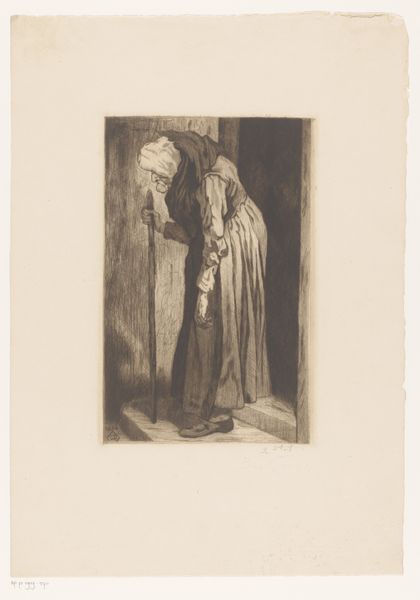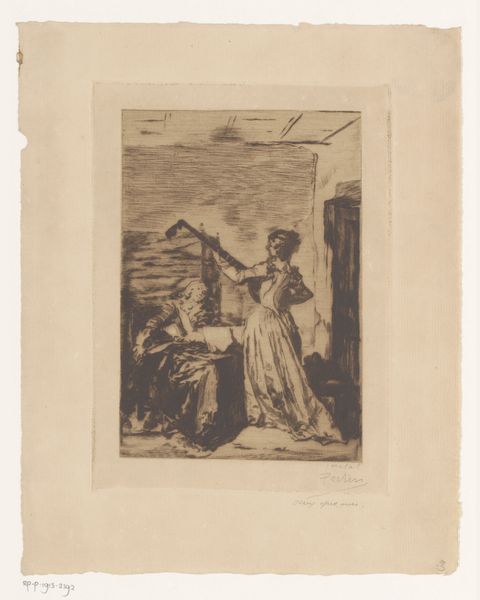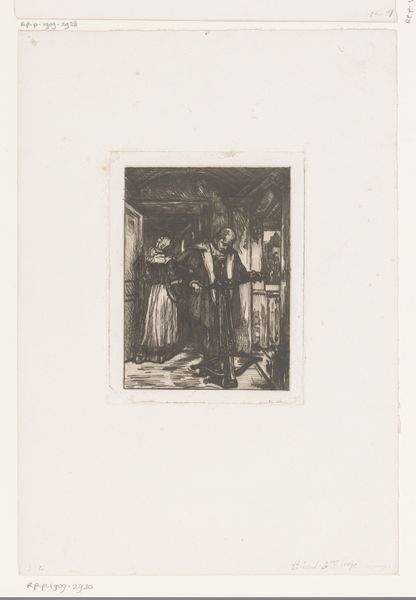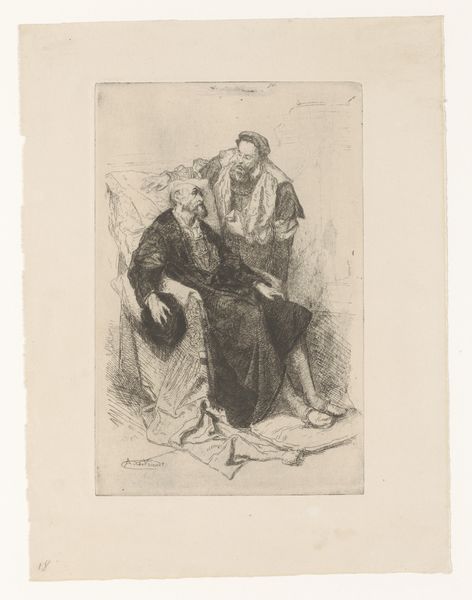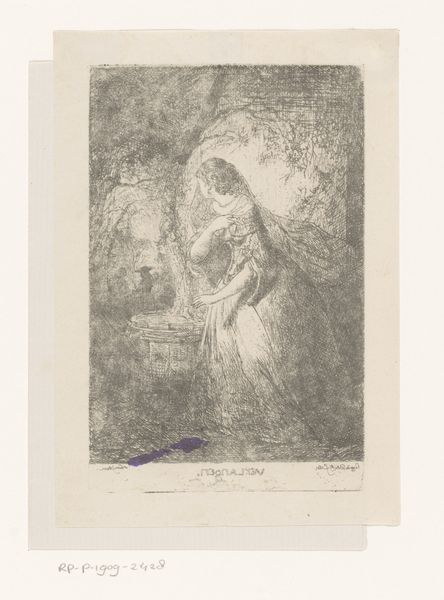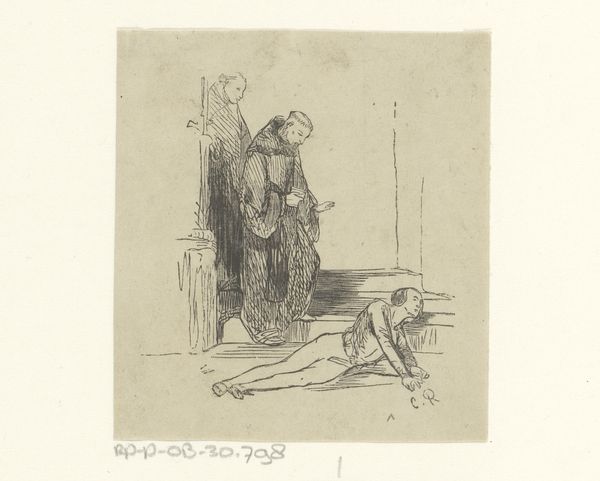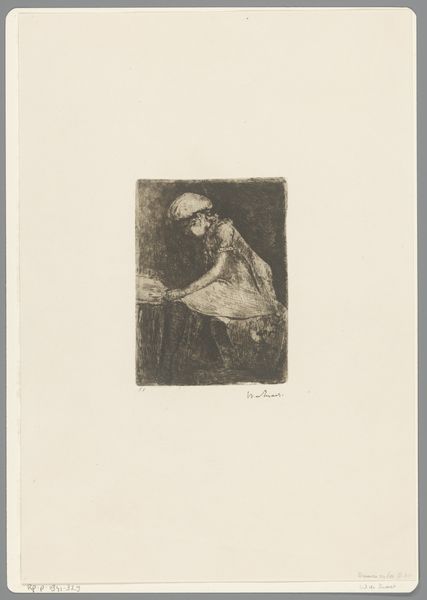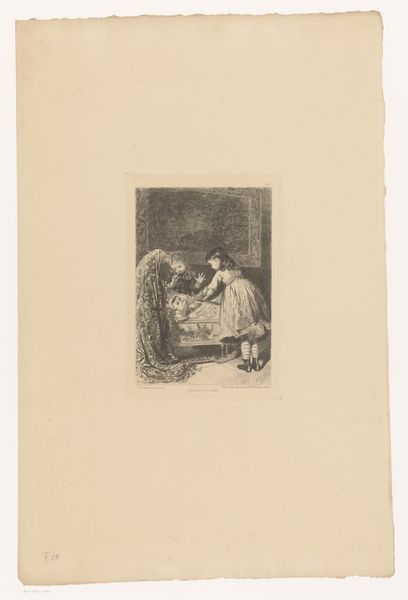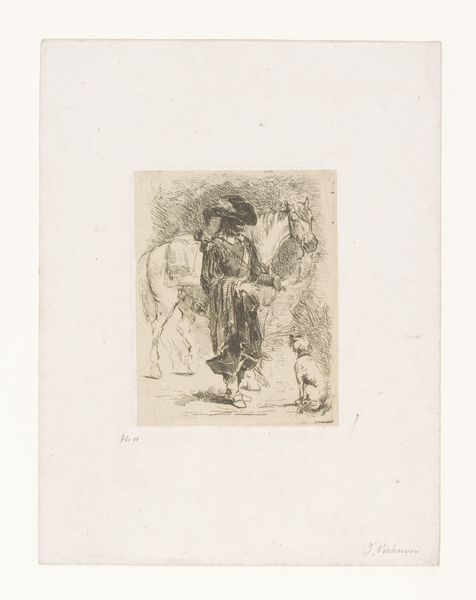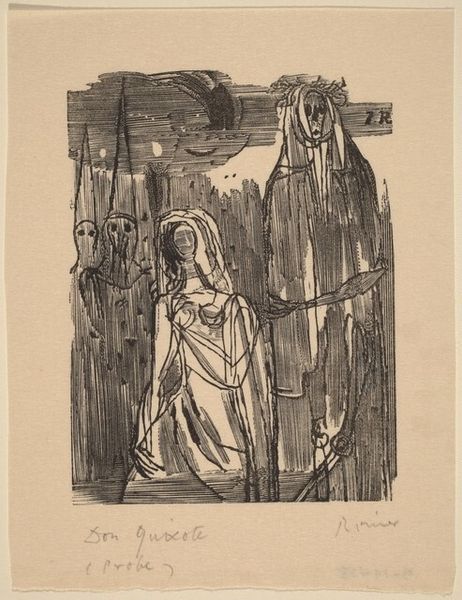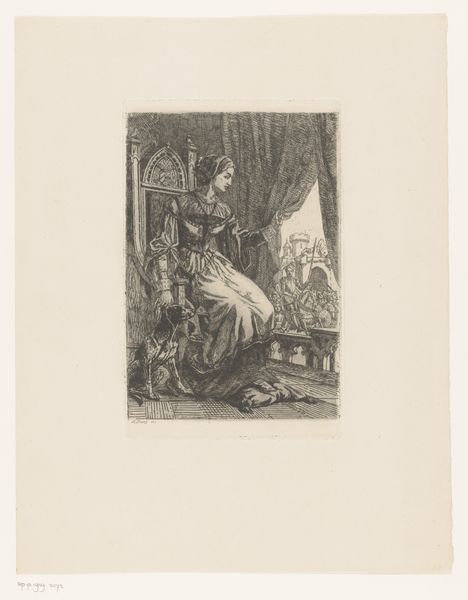
Ziekenhuisinterieur met vrouw die ondersteund wordt door een vrouw met een witte kap op haar hoofd 1909
0:00
0:00
drawing, print, etching
#
portrait
#
drawing
# print
#
etching
#
symbolism
#
genre-painting
Dimensions: height 295 mm, width 195 mm
Copyright: Rijks Museum: Open Domain
Curator: What a poignant scene rendered in etching. This work, created around 1909, is titled "Hospital Interior with a Woman Supported by a Woman with a White Cap on Her Head" by Marcel Roux. Editor: Yes, immediately struck by the desaturated tones and its heavy somber mood; its constrained atmosphere truly impacts the viewer. The composition directs our gaze to the figures while suggesting a sense of enclosure through those roughly-defined interiors. Curator: Roux's technical proficiency here is captivating. The way he manipulates the etched lines—dense and shadowed in certain areas to almost ethereal and fading in others—suggests that he clearly understood the range of symbolic power attainable from working in this medium. What significance might the contrast play between shadow and light? Editor: In viewing such a scene it makes me consider how healthcare operated and who had access to it. This would probably not have depicted an egalitarian society; the stark reality for many was one of illness without care. Was Roux using this medium and imagery to make some statements of equity and the nature of medical treatment at this period? Curator: Interesting proposal; the thematic undertones indeed resonate when juxtaposed with the societal constraints of that era. But how far might those readings shift based on what one emphasizes? Focus intently on its structural components—its spatial relationships—the human forms—or its technical elements; there resides a unified construction regardless of subject-matter which brings one to the whole art-piece itself. Editor: Your analysis certainly focuses our perception more internally. It does provoke questions on representation; by capturing this kind of quiet scene, did Roux hope it would humanize the realities hidden away in these medical environments? It speaks to me about visibility and acknowledgement, and it feels radical during a period which probably favored concealment over displays of such raw realities of living within suffering. Curator: You speak insightfully from a societal lens, while by way of formal visual dissection we might equally appreciate this etched moment in aesthetic experience removed or disconnected entirely from anything "real." A study in pure emotive composition rendered with the touch of masterful design. Editor: A potent dialogue of art historical context mingling with the art work itself, shaping a deeper encounter with both image, the process of creating it, and the societal reflection such imagery stirs from within our hearts today.
Comments
No comments
Be the first to comment and join the conversation on the ultimate creative platform.
